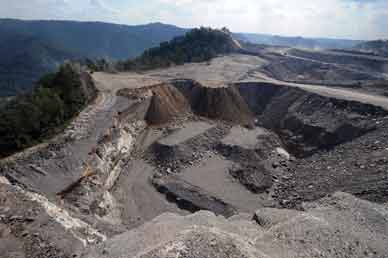 Just because the EPA has declared that all pending mountaintop removal projects are in violation of the Clean Water Act and must be reviewed further doesn't mean mountaintop removal is vanquished. For one thing, the projects are being reviewed with the companies to see if there is an acceptable solution; they aren't canceled. For the other, there are lots of permits being used right now. The Nation has an article by Jeff Biggers about The Coalfield Uprising which tells a lot more. Here's a short quote:
Just because the EPA has declared that all pending mountaintop removal projects are in violation of the Clean Water Act and must be reviewed further doesn't mean mountaintop removal is vanquished. For one thing, the projects are being reviewed with the companies to see if there is an acceptable solution; they aren't canceled. For the other, there are lots of permits being used right now. The Nation has an article by Jeff Biggers about The Coalfield Uprising which tells a lot more. Here's a short quote:For the past few years, ever since a massive twenty-story dragline landed on a ridge near their home, the Webbs had endured twice-daily, bone-rattling explosions and the quasi-apocalyptic storms of coal dust and fly rock that blanketed their home and garden. Lindytown's creeks and mountain hollows no longer exist, and a once-thriving community has been reduced to a ghost town. "It's unreal. It's like we're living in a war zone," Lora Webb told a local newspaper last fall.Recently they gave up and sold their ancestral home to the mining company, Massey Energy, and were given 60 days to get out.
The temporarily homeless Webbs are a stark example that mountaintop removal does more than "likely cause water quality impacts," as the EPA has determined. More than 3.5 million pounds of explosives rip daily across the ridges and historic mountain communities in West Virginia; a similar amount of explosives are employed in eastern Kentucky, southwestern Virginia and eastern Tennessee. Mountaintop removal operations have destroyed more than 500 mountains and 1.2 million acres of forest in our nation's oldest and most diverse range, and jammed more than 1,200 miles of streams with mining waste.Let us hope that the EPA finally puts a complete stop on those new projects, and begins to look at the old ones as well.










No comments:
Post a Comment